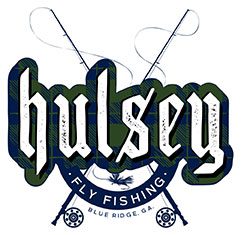The area between the bottom of the river and the surface might as well be outer space for most fly anglers. This is where 90 percent of the trouty water flows and where it is most neglected. The surface is where the glorious dry fly action occurs, and the bottom is where the year-round productive nymph fishing happens. No doubt dry fly fishing is the most visual and exciting and nymph fishing or bottom dredging probably out produces any other tactic day in and day out, but what about the mid -levels of the water column?
When mayflies, caddisflies and midges swim to the surface to become adults they are easy pickings for attentive fish. Some of the larger trout in streams specifically target emergers because they are pretty much helpless and easy to catch while in this stage. Emergers are safe foods for a lot of fish simply because anglers are grinding the bottom with heavy tungsten beaded nymph patterns or casting Elk Hair Caddis or Stimulators on top. For me the excitement of having a trout ding a brace of swung soft hackles or a wet fly is where it’s at!
Mimicking the movement and the fly pattern of an ascending insect requires knowledge of entomology and reading the water. Fishing emergers effectively is an ancient craft and I’ve been accused of being some kind of sorcerer for the effectiveness of this dark art. One of the most underutilized tools for fly fishers are a good pair of amber colored polarized glasses. I fish with my eyes first trying to locate suspended fish between a few inches and maybe 3 or 4 feet of the surface. These fish are prime candidates for falling prey to an accurately swung fly.
Fish in this part of the water column are probably looking for ascending bugs. If there is a hatch coming off, they are easier to locate. Believe me, if some fish are after the adult bugs, twice as many are eating the struggling emergers. A carefully matched soft hackle can be deadly.
There are a couple of ways to trigger a fish into eating your offering. Carefully approaching the feeding trout from upstream, casting slightly across the stream and letting the drag of the line engage the fly right before reaching the fish will make the fly ascend in the water. Get the timing right and more often than not the trout can’t help itself! Another way is to creep up to the fish from downstream, cast upstream of the fish then lift the fly or let the current engage right when the fly enters the fish’s sight window. With this technique, a blast from the fish will usually ensue.
This last tactic was made famous by James Leisenring known as the Leisenring Lift, a deadly tactic for fishing wets or soft hackles. Both tactics can be accomplished with either a single hand rod or a two- handed trout spey rod.
Don’t forget about the water in between the surface and the bottom. A heck of a lot goes on in a trout stream’s outer space! We teach this deadly tactic along with a whole lot more—just give us a call.
Give David Hulsey a call at (770) 639-4001 to book a class or a guided trout trip. See his website at www.hulseyflyfishing.com

